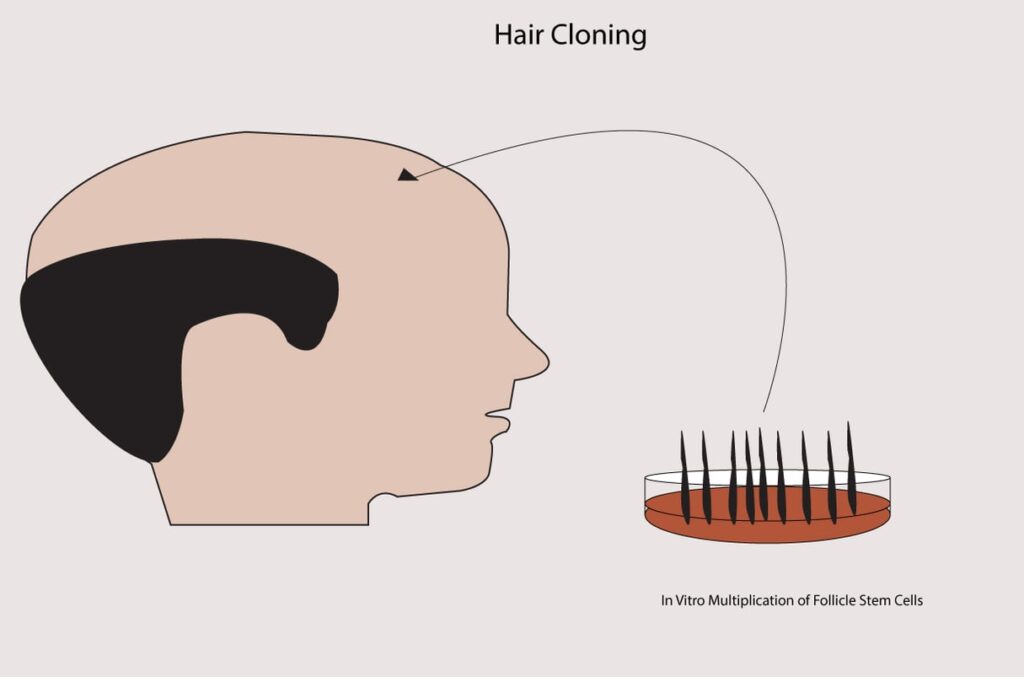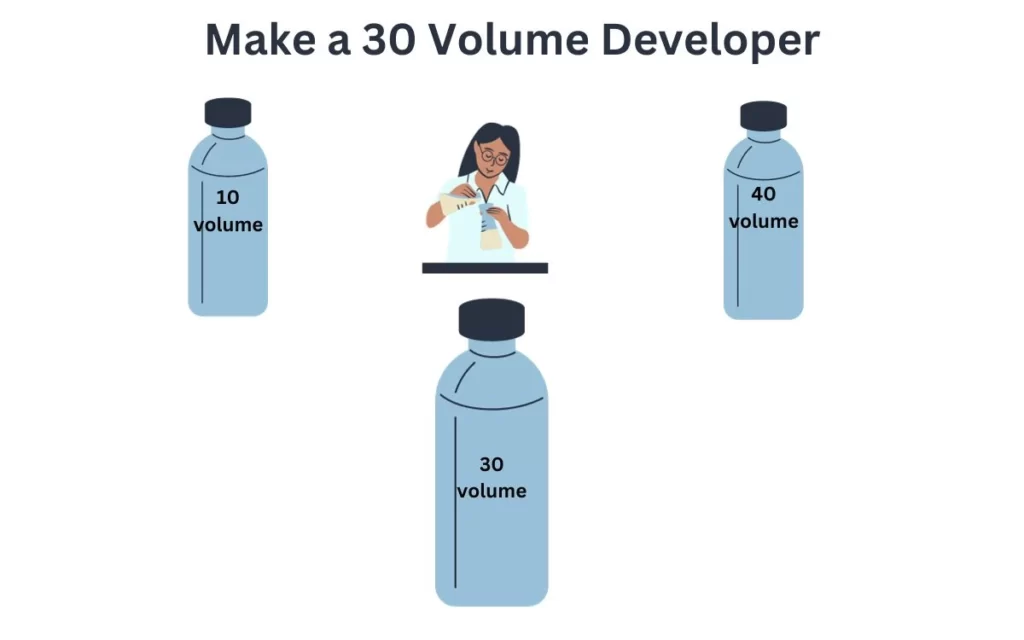Hair is no laughing matter. It is a subject that is crucial for all of us and our self-esteem. While a “good hair” day boosts our self-confidence and mood, a “poor hair” day sets us in a backward funk. Hair loss is a growing problem that affects a substantial number of people all around the world. Some scientist claim to cure baldness by 2025 and others say 2030.
There is no permanent way to prevent pattern hair loss, but you can cover the bald area through transplanted hair. However, this hair is limited and doesn’t cover complete baldness. Therefore, scientists are trying to provide you with unlimited hair follicles through cloning.
Japanese scientists are running experiments, and they hope they will be able to cure baldness by 2025 through hair cloning. Also, few medications are in trials that can be more useful against hair loss than the present treatment.
Below, I have very simply explained the incredible technique that promises to help us have as many hair strands that can cover the whole balded area for a lifetime. So, let’s dive in!
Will Baldness be Cured By 2025 Through Hair Cloning?
While numerous advancements are being made in hair cloning, you can not depend solely on this technology to help you treat your baldness or serve as a viable hair restoration treatment yet.
There is still much work to be done in terms of developing more advanced techniques and technologies. Therefore, it is still not clear if scientists will be able to cure baldness by 2025 through cloning.
Above all, human hair cloning trials are still on hold. The scientists will be able to assess the hair cloning positives and negatives only after these trials are completed.
Further in this article, we have explained the general procedure of hair cloning which scientists are trying to succeed in. It is a general overview that will help understand what they are doing.
Difference Between Hair Stem Cell Therapy and Hair Cloning
The two processes are entirely different and have distinct purposes. Therefore, comprehending both is necessary for you to get a good idea about future hair restoration treatments.
What is Hair Cloning?
Hair Cloning refers to creating new hair from epithelial hair follicle stem cells in the laboratory. Hair does not increase in number naturally in us. An average human holds up to 100,000 hair strands on his/her head.
Generally, in a hair transplant, we take balding resistance hair from the back of our head and implant it in the bare area. In future hair follicle cloning, experts will be able to multiply the balding resistance hair in the in-vitro (in the lab) medium.
According to studies, hair cloning will involve the following four steps.
Stages of Hair Cloning
Even the hair follicle cloning has not undergone human trials yet, it is most likely that scientists initiate the trials in the upcoming years (2022 or 23). According to the available literature, hair cloning will be done in the following four stages.
1. Cell Isolation
To date, various studies have been carried out to find out the most suitable cells capable of hair cloning. According to a Japanese Researcher, Dr. Tsuji, they have observed epithelial hair follicle stem cells (HFSCs) are most capable of in-vitro multiplication.
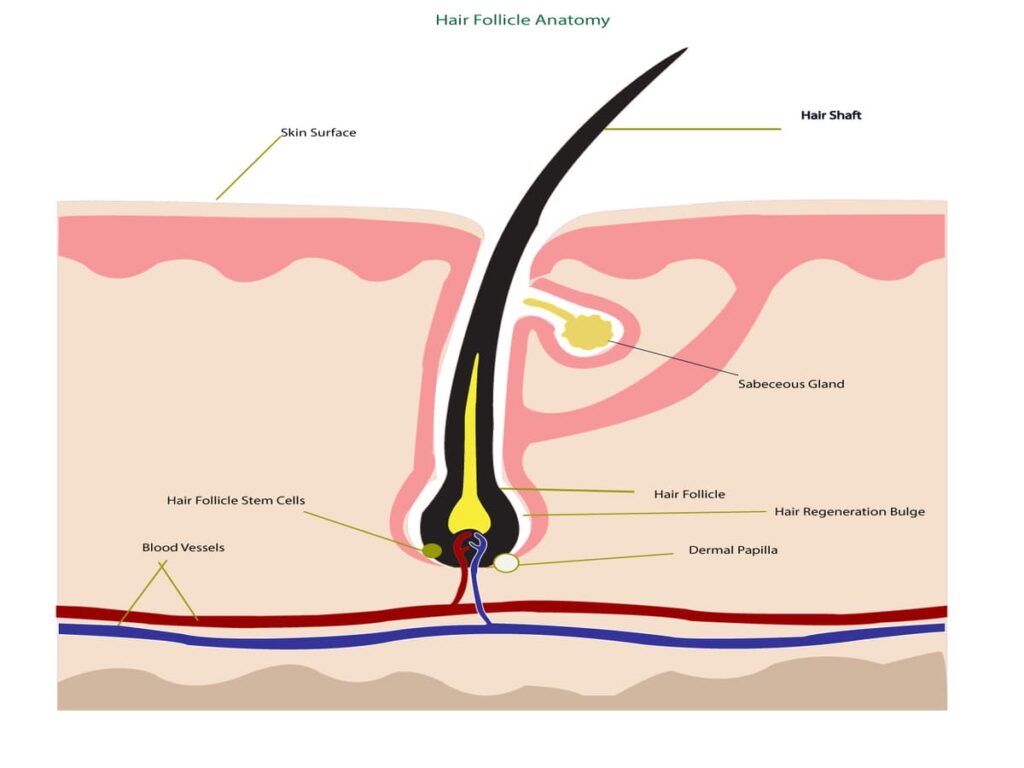
Therefore, the first step of hair cloning will be the isolation of epithelial HFSCs from the patient. Also, there will be a need for isolation of hair regeneration inducing and supporting cells. According to studies, the following two types of cells will be required in this regard.
- Mesenchymal Dermal Papilla Cells (DPCs)
- Mesenchymal Stem Cells (DSCs)
2. Cell Expansion
All these three types of isolated cells will then be transferred to a growth and multiplication medium. According to the RIKEN Center for Biosystems Dynamics Research, the Japanese scientists, after trying 220 times, devised a medium named NFFSE.
Containing all essential growth factors for hair follicle cloning, NFFSE is the most effective medium. In the study, scientists were successful in multiplying a single epithelial hair follicle stem cell 4000 times. However, the Dermal Papilla cell multiplied only 100 times.
According to these results, it will be possible to multiply one hair follicle into 100 hair.
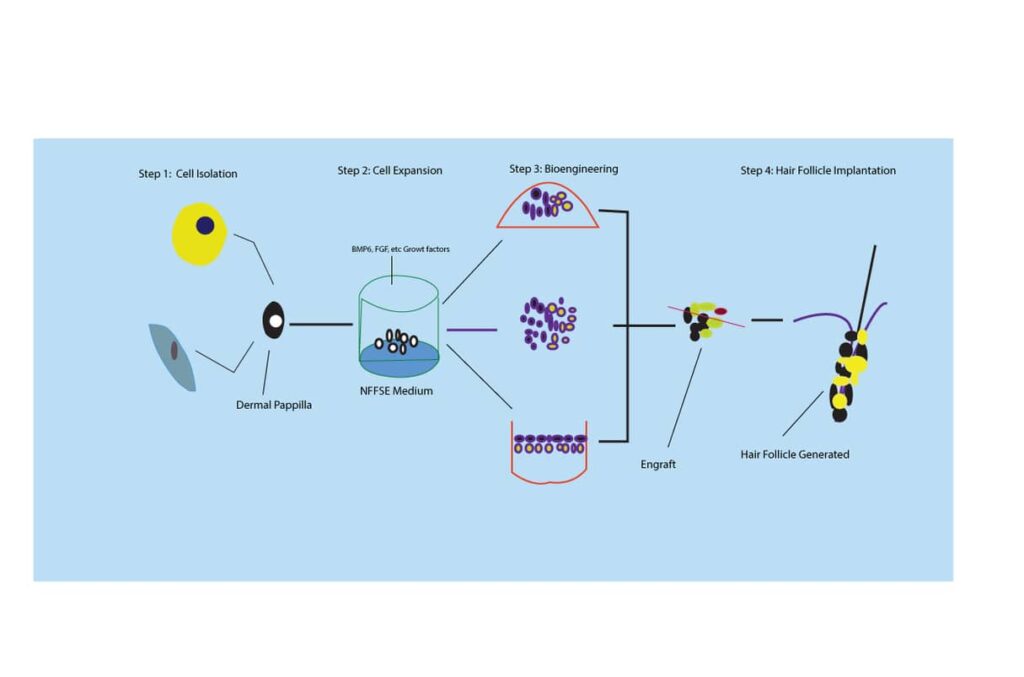
3. Bioengineering of Differentiated Cells
On our heads, hair grows in a specific environment where a stern regulatory signaling pathway works in coordination. This setting is responsible for hair regeneration when our hair falls after completing one growth cycle.
For hair cloning, we necessitate an artificial environment that can fulfill the requirements of signaling regulation. In this regard, experts have developed a 3D scaffold. And owing to this environment, Dr. Tsuji was able to regenerate the implanted hair three times on experimental mice.
It means that if hair cloning becomes commercialized in the next few years, in-vitro multiplied hair follicles can stay on your head for 12 to 20 years.
4. Hair Implantation
The implantation procedure of cloned hair follicles is almost the same as normal hair replacement surgery. The hair transplant surgeon will implant one hair after the other.
What is Hair Stem Cell Therapy?
In hair stem cell therapy, experts only multiply your dermal papillae cells into millions in an in-vitro culture instead of generating whole new hair as in hyped and awaited hair cloning.
Hair stem cell therapy is effective only for people who just started experiencing hair thinning and balding. Therefore, people who have gone completely bald from the temple and crown areas will not benefit from it. Why?
A hair tissue has two types of cells, epithelial stem cells (EPSCs) at the upper bulge and dermal papillae stem cells (DPSCs) at the lower bulge. Stern coordination between both types causes hair growth and regeneration.
Due to various hair loss-causing factors (genetics, aging, and infections), DPSCs decrease in number with time.
According to studies, when one hair tissue loses 50 percent of dermal papillae stem cells, it becomes impossible to regrow that hair again even by stem cell therapy. And in case you have lost 50 DPSCs of all of your scalp hair, your scalp will look completely bald and shiny.
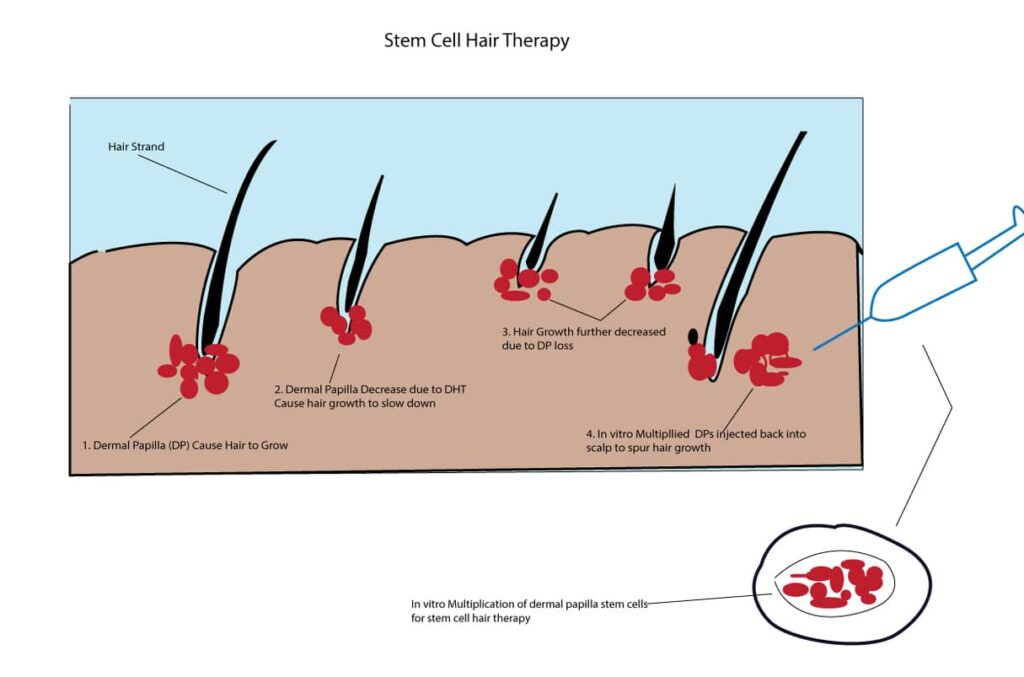
However, If you have not lost significant hair and just commenced experiencing thinning and balding, stem cell therapy can be effective. In hair stem cell therapy, experts will take some hair from the back of your head and perform the following steps.
- Perform centrifugation to isolate the dermal papillae stem cells
- Transfer DPSCs to an in vitro medium to replicate them
- It will create millions of DPSCs
- Injecting DPSCs into hair thinning and balding area to restore the depleting DPSCs from hair tissue
- This action will boost hair growth and regeneration and will restore the miniaturized hair strand to normal.
Where Do Scientists Still Struggle in Hair Follicle Cloning?
The construction of functional hair follicles, their commercialization, and their clinical applications are still big challenges in the research field. On the whole, there are three main impediments in the progression of hair cloning to revolutionize hair loss therapy.
- Creating Hair Follicle Microenvironment: Hair follicle generation and cycling call for meticulously coordinated mesenchymal interactions. This tightly orchestrated environment is inevitable hair growth and recycling the cloning therapy. Scientists recently showed that they have created the required plinth through bioengineering, but still, more detailed studies are needed.
- Giving Hair A Distinct Growing Direction: Preventing ingrowth of transplanted cloned hair. It must grow in a specific direction to render a natural-looking hairstyle.
- Cyclic Regeneration of Hair Follicle: We have a hair growth cycle in which hair remains youthful for 2 to 5 years and then falls to replace itself with a new strand. It is necessary to make cloned hair able to regenerate itself so that patients can hold the hair on their heads for at least 12 to 15 years after the surgery.
Well, according to recently done studies, all of these issues look to move towards a solution. How?
- Scientists have created 3D models that act as a scaffold to mimic the natural hair follicle microenvironment.
- It is also possible to build scaffold-free microtissues through the creation of multicellular organoids.
- Researchers were successful in producing 3 times cyclic regeneration of cloned hair follicles in mice.
What Have We Learned?
There are multiple hair loss treatments available, but on the whole, they are partially efficacious. In the last decade, hair transplants for hair restoration bumped into a boom.
Therefore, scientists are looking for novel ways like hair cloning and stem cell therapy as hair loss treatments. Hair cloning is still undergoing research phases, and experts are hopeful that in the coming 5 to 7 years, this treatment option may come into action.

